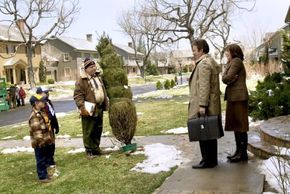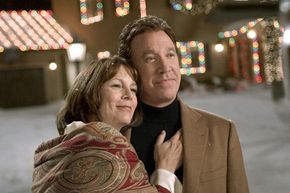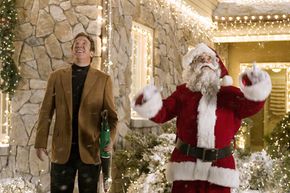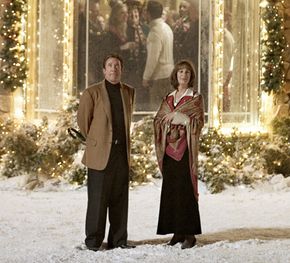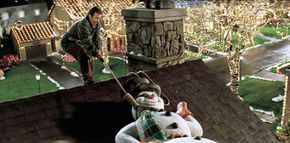During the design process, Stover would post the drawings of the houses on the walls of his office hallway, "so I knew which house was across from another house and could see how it looked. Everything had to work visually." Next, hundreds of carpenters, steelworkers, plasterers, painters, molders, greensmen, carpenters, prop makers, and cement makers descended upon the Downey set, including contractors hired by production coordinator David Elliott.
Once the street was in place and the structures went up, attention shifted to the interiors, matched to the inhabitants. "We made the Trogdon house very densely decorated--a lot of kid stuff. Mrs. Scheel likes cats, so there are a lot of cat motifs in the house. Frohmeyer has an elk's head over the fireplace, with little flags on the Christmas tree."
The Krank house's interior, devoid of holiday decoration until late in the movie, was created at the Downey location as well, but the second floor interior set was built at Culver Studios. Also erected at Culver was a replica of the Kranks' rooftop, because the 26' elevation of the house was too precarious for a stunt involving Tim Allen. "The set rooftop was still pretty high -- 16 feet -- but I could change the slope of it a little bit," explains Stover.
The roof stunt involves a Frosty the Snowman figure, and Stover requested 20 versions, of different weights and sizes. The one that looked best on the roof was 8' tall, "but it wouldn't have fit in his basement, so we had to cheat with a smaller one that would," notes Stover. Other decorations, including wreaths, ornaments, and lights, were brought in by a Christmas decorations company.
Stover was also careful to coordinate the holiday color palette with costume designer Susie DeSanto. Mrs. Krank, whose home's walls are green, always wears red, while Mrs. Scheel, whose walls are red, wears green.
